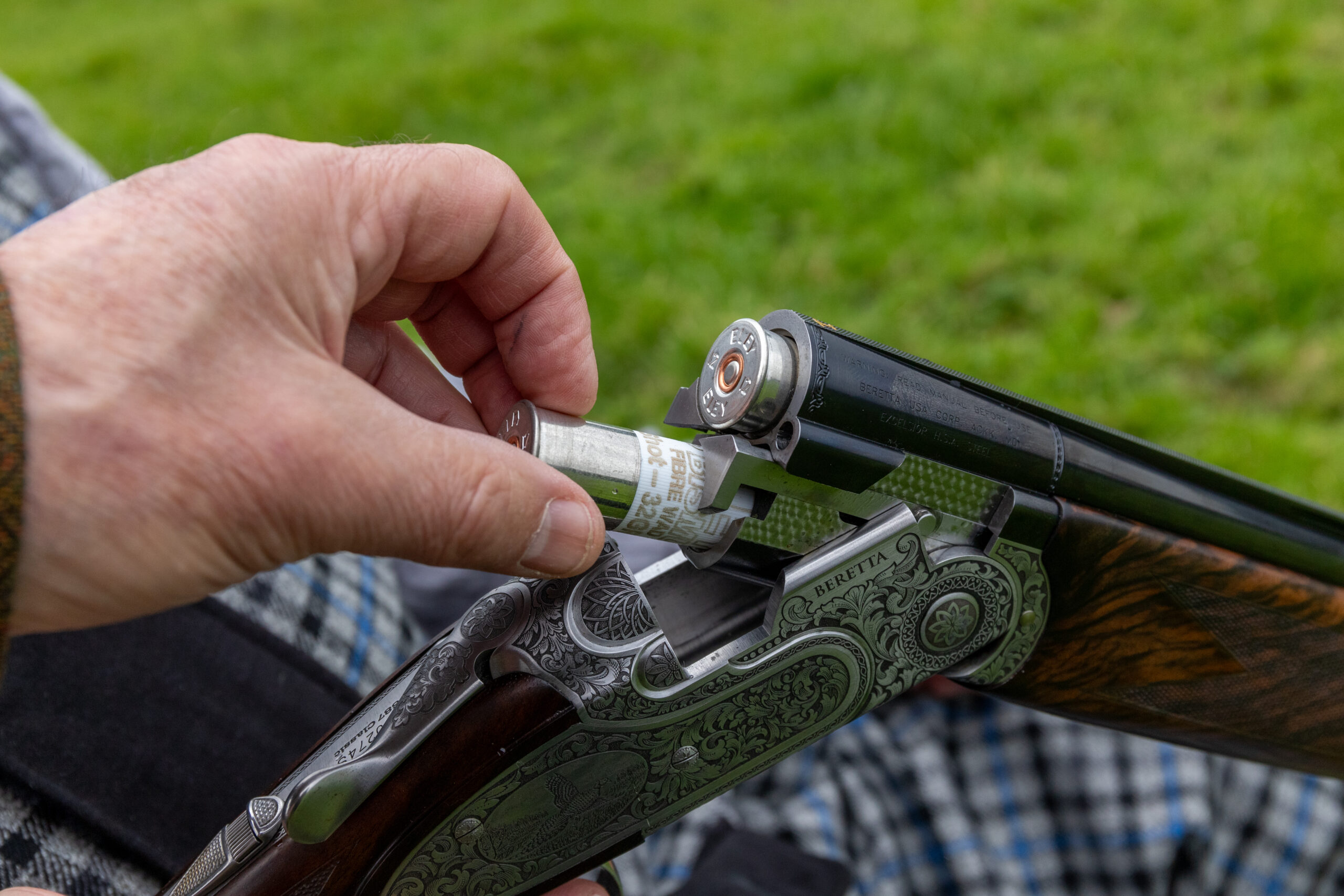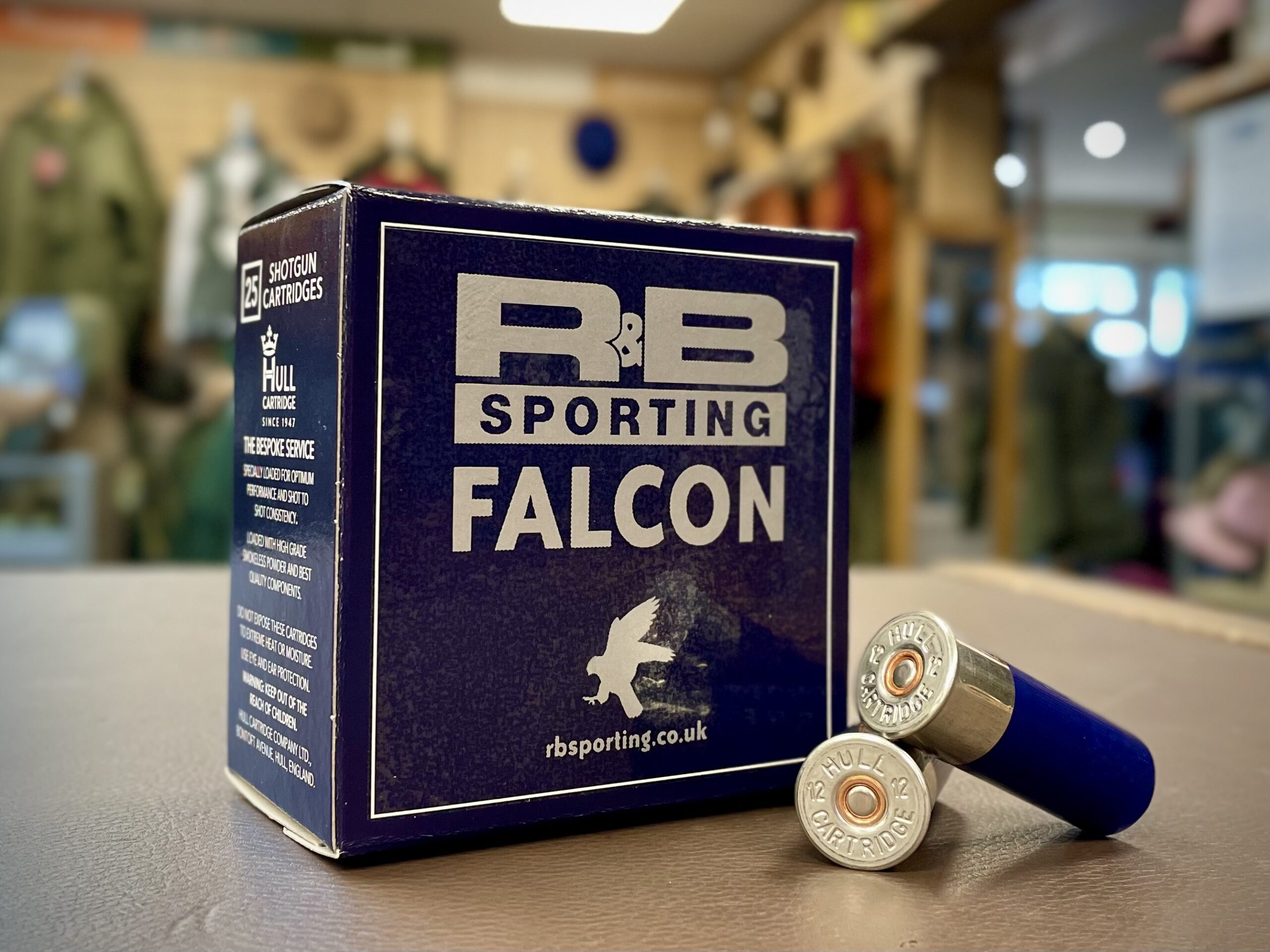Finding the perfect calibre for deer
Rachel Draper braves the perennial debate about the best round for deer in the UK and looks at how stalkers can prepare to go lead-free

Red deer stag (Cervus elaphus) in the rain.
The UK is blessed to have a selection of deer species, both indigenous and introduced — and vitally important management of deer creates sporting opportunities all around the country. However, with species ranging from red stags weighing up to 190kg to a 10kg muntjac, having a suitable rifle for all can be a bit of a headache. There are also legal requirements of calibre for deer to consider. (Read our suggestions for the best deer stalking clothing.)

Stalking smaller deer, such as muntjac, calls for a bullet with a minimum weight of 50-gr
Calibre for deer
In England and Wales, the minimum bullet weight for muntjac and Chinese water deer is 50-gr, with a minimum calibre of .220in and a muzzle energy of at least 1,000ft/lb. For red, fallow, sika and roe, the minimum calibre is .240in with a muzzle energy of at least 1,700ft/lb.
For those shooting in Scotland, the minimum bullet weight for roe is 50-gr and anything larger is 100-gr. Muzzle energy must be at least 1,000ft/lb for roe and 1,750ft/lb for larger species, with a minimum muzzle velocity for all of 2,450fps.

Based on our diverse range of deer species, a question that is asked again and again is: what is the perfect rifle calibre for deer in the UK? Though there has been great debate, really this is a question that cannot be answered. Shooters are spoilt for choice with a range of different calibres, each with its pros and cons.
Really, the decision comes down to personal preference and what your main requirements are. There is a selection of very popular calibres that feature in list upon list of the best for UK deer, including the .243 Win, .270 Win and .308 Win. However, a useful and worthy calibre that so often appears to be ignored in the UK is the .280 Rem.

The .243 Win is favoured by many stalkers and is well suited to foxes and small deer
The .280 Remington round was introduced in 1957 and, unfortunately, never really got a fair shot in the popularity stakes. Originally chambered in Remington M740 semi-automatic rifles, the ballistics were hampered as it was only loaded to very mild pressures and did not get a chance to show its full potential. This did not impress the sporting market.
Its arch-nemesis, the .270 Winchester, was providing very good results while loaded to much higher pressures, so the .280 Rem took a back seat. Only five years later, the 7mm Remington Magnum was also introduced and this dealt another blow to the .280 Rem’s already minimal popularity.
The .280 Rem is essentially a .30-06 case necked down, making it suitable for .284 (7mm) bullets. This provides the potential for a narrower bullet that can perform with better ballistic coefficient, with almost equal energy to its parent case.
It sits comfortably between the 7mm Rem Mag and the 7mm-08 Rem. Though all are compatible with 7mm bullets, the 7mm Rem Mag is too heavy to be toned down for smaller quarry and the 7mm-08 Rem is generally considered too small and light to be used on tough medium game.
The versatile .280 Rem case is a handloader’s dream as it can be loaded with a 7mm bullet head to suit anything from a muntjac to red stags, large wild boar, moose and elk to springbok, impala and other plains game. It is most comfortable with 140-gr to 162-gr bullets, with good results at decent distances, even exceeding 500 yards when in the hands of an experienced Shot.
For factory loads, there is a selection produced by the usual makers, including the Norma Vulkan 170-gr with a muzzle velocity of 2,592fps, the 150-gr ELD-X from Hornady at 2,925fps and the 140-gr Fusion from Federal with 2,990fps.

Lead bullets (top) are designed to increase the size of the wound channel; lead free bulelts are not
Popular choice
In contrast to the .280 Rem’s unpopularity, the .243 Win is a favourite of many stalkers and is the most popular centrefire calibre in the UK. It is highly suited to foxes and small deer and is at its best with bullets of around 70-gr to 85-gr.
Though the .243 can be loaded up to 105-gr, it may not be generally recommended for use on larger deer as the margin for error is that bit smaller and could result in injury rather than a clean kill.
The .308 Winchester is a popular choice and can also be used for the majority of UK deer. Some shooters may even be comfortable using a .308 on driven boar trips, though it is a little on the small side. A plus-point for this calibre is the huge selection of factory ammo that is easily available, with it comfortably shooting anything from 150-gr to 180-gr bullets.
The .270 Winchester is also a good match for the .280 and has a large following here in the UK. It shoots slightly lighter bullets than the .280 Rem and has a higher velocity.

Choosing a stalking round is very much down to individual choice, with some preferring to go down the homeloading route
Switching over
As we look towards the future of shooting, we will inevitably have to accept that lead-free ammunition will become the norm. The National Game Dealers Association announced earlier this year that it will not be accepting game shot with lead from July 2022 and many stalkers and deer management teams have already made the jump, using non-toxic bullets for the past few years.
There is a small selection of lead-free bullets available and it is likely this will only increase as time goes on. If you are a hand loader, you have much more choice at the moment, but there are some factory loads that are suitable. The options for lead alternatives tend to be either copper or gliding metals, such as a copper-zinc brass alloy.
Those on the market include Fox Classic Hunter bullets made of copper- zinc alloy, Nosler’s E-Tip lead-free and the RWS offering of Evolution Green, a partially fragmenting bullet made of food-safe tin.
One of the main concerns with lead-free bullets is that they are less dense and may therefore need to be longer in order to match the same weight as the equivalent in lead ammo. This can cause issues with stability and accuracy, and also may be something to consider if your rifle has a short action, as the lead-free options may not fit. The general recommendation is to opt for a lighter and faster non-toxic bullet to ensure the required ballistic performance.
Another concern with non-toxic bullets is energy transfer. Clean, quick kills rely on high velocity and expansion on impact, creating a wound channel that lethally damages vital organs. Lead bullets are designed to shed weight to increase the size of the wound channel, whereas most non-toxic bullets are not.
The smaller and narrower the wound channel, the greater the likelihood of a slow death. However, by choosing bullets carefully and ensuring that there is sufficient energy transfer, there is no reason why they cannot be equally as lethal and effective as lead.
Change in performance
The most important thing to remember when moving to non-toxic ammo is that it will perform slightly differently. Do as much research as possible and test what works for you and your rifle before using it on your intended quarry.
Choosing a rifle is a personal decision and there will be diehard fans of many different calibres. Each calibre has its own qualities and it is very much down to the individual shooter to decide whether it safely fits their requirements and whether they enjoy shooting it.
Popular calibres come and go and it will be interesting to see what impact the move away from lead will have on preferred options. One thing I do believe is that the humble .280 Rem should be added to the list of considerations when searching for the perfect calibre for deer in the UK.








